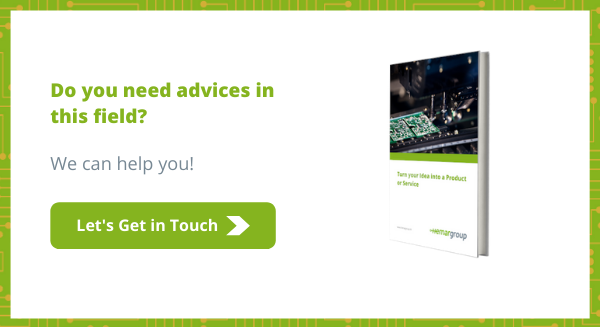IoT trends: 2018 and the following years will be the best to see what’s happening in the thrilling Internet of things world.
Without further ado, let’s dive into the trends that will hopefully come to life in the near future.
Internet of things trends: key market numbers
Business Insiders (2016) predicted that “nearly $6 trillion will be spent on IoT solutions over the next five years”. The business and manufacturing world fully understood the potential of this industry, that is predicted to lead to 1 trillion of connected devices by the end of 2025 (HP Report on Internet of Things, 2015).
Which players are going to be the top adopters of IoT solutions? Business Insiders (2016) reveals businesses will be the top adopters of IoT as “they see three ways the IoT can improve their bottom line by 1) lowering operating costs, 2) increasing productivity, and 3) expanding to new markets or developing new product offerings”. Furthermore, governments are predicted to be the second-largest adopters of IoT ecosystems.
Not only will companies take advantage of it, “according to global management consulting company McKinsey, Industrial Internet of Things will unlock $6.2 trillion in potential economic impact by 2025. For the electricity sector alone, the World Economic Forum estimates $1.3 trillion of value can be captured with IIoT.” (CSMwire, 2018).
What are the top IoT trends to watch for 2018?
- IoT will enter into manufacturing.
IndustryWeek, 2018 announces the 3 key drivers and trends from IoT in BCG’s report of the upcoming years that will involve both “manufacturers and, to a lesser but still significant extent process manufacturers” thanks to:- Predictive maintenance: IoT-enabled equipment will allow saving money and time by reducing “equipment downtime, maintenance planning time, and overall maintenance costs” by optimizing the maintenance process while avoiding any interference with the ongoing production.
- Self-optimizing production: thanks to factories and supply chains that will be interconnected in real time, the production process will enhance the optimization of the process by itself.
- Automated inventory management: by capturing the location and the condition of their inventory in route and in the warehouse, manufacturers will be able to reduce time & costs involved in inventory management.
- Besides wearables, a trend that we know is expanding quickly, there are alternative industries that are due to get involved in the IoT trend wave; among them, some we can name already:
- IoT in Agriculture, where smart-farming comes in handy for farm-vehicle-tracking, livestock monitoring, storage monitoring, from soil monitoring to cost-saving solutions.
- IoT & smart cities, where IoT will help to solve the major city-specific issues such as traffic jams, pollution, supplies as well as over-tourism, as reported by Euromonitor International, in order to address sustainability in tourism management.
- IoT connected cars, with the aim of enhancing passengers’ comfort as well as car-maintenance thanks to specific sensors
- Fitness and Healthcare in IoT. STANLEY Healthcare’s AeroScout® Real-Time Location System (RTLS) platform is an example of this: a solution that marries real-time location data with clinical information systems to help increase productivity as well as the patients’ well-being
- As IndustryWeek reports, Blockchain will soon be involved in IoT, as this “technology creates a seamless way for digital information to be stored, recorded, and distributed but not falsified or copied. Experts predict it will play an increasingly large role in other industries, including manufacturing. Think of it as a new, more trustworthy way of building digital relationships”. When applied to Blockchain, IoT technology will help secure transactions and enhance the efficiency of its specific supply chain.
- IoT technology will lead to greater security concerns (Forbes, 2018) as more and more systems are developed to manage sensitive data, with data safety becoming the greatest goal. As the number of sensor-infused, internet-connected devices increases, companies will increasingly specialize in IoT security solutions. As mentioned by Business Insider, here are some of the issues that will need to be addressed:
- Vulnerability to hacking
- On-device security
- Public perception of sensitive data-security
- Unwanted public profiling
- Consumer confidence in IoT devices
- Mobile-first and IoT apps. It comes as no surprise that in a mobile-first world, IoT is a trend that is not just exclusive to big manufacturing and IT companies. Since they are connected to smartphones, these devices will help people, not just companies, to bridge the gap between the physical and digital world, the so-called “Digital twins”, in order to improve the quality and productivity of life, society and industries thanks to incredibly useful apps, that will be applicable to common people’s’ everyday lives. There are already plenty of wearables that are the top IoT solutions for privates, but that’s only the beginning.
.png)
